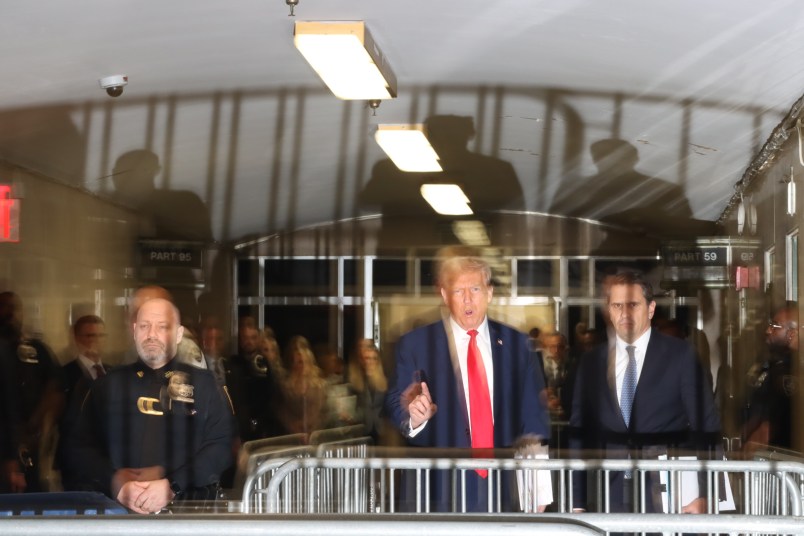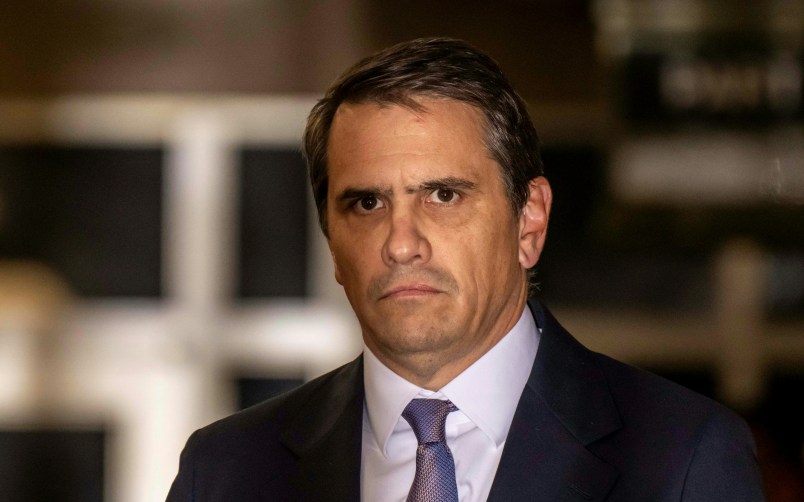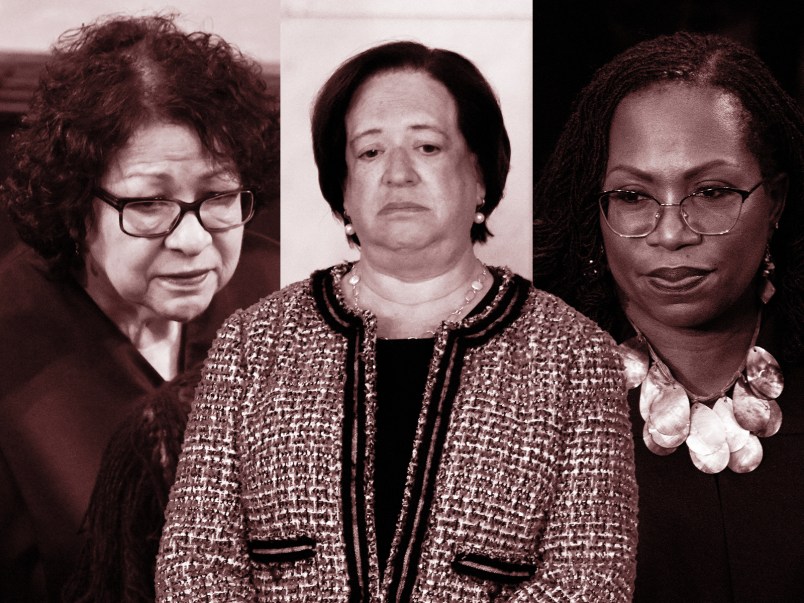1||Following uprisings elsewhere in the Middle East, Libyans took to the streets in February calling for leader Muammar Qaddafi to step down and end his 40-year reign. What began as peaceful protests escalated into a violent uprising, with rebel forces battling Qaddafi loyalists for control of the country. ||I94/ZUMA Press/Newscom&&
2||In late February, protesters poured into the stress in cities including Benghazi, demanding that Qaddafi relinquish power. ||d77/ZUMA Press/Newscom&&
3||The government quickly cracked down on the protests, opening fire and killing civilians to quell the uprising. ||x99/ZUMA Press/Newscom&&
4||Qaddafi’s son, Saif, said on state television that the government had overreacted by using deadly force, but rebuffed calls for his father to step down, and called for an end to the protests.||Libyan State Television&&
5||Protesters ignored that demand and continued to demonstrate in major cities. ||Cai Yang/Xinhua/Newscom&&
6||In a public rebuke to Qaddafi, Libya’s Deputy Ambassador to the United Nations Ibrahim Dabbash resigned, and called for Qaddafi to leave. ||J.B Nicholas/Splash News/Newscom&&
7||Other high-ranking officials also defected, including Qaddafi’s former interior minister, General Abdel Fatah Yunis. ||De Malglaive Etienne/ABACA/Newscom&&
8||As protests spread, Qaddafi condemned the uprising, saying it was being led by foreign forces who had drugged Libyans with hallucination pills. ||CNN&&
9||Still, protests continued to spread. In Benghazi, Libyans burned a poster of Qaddafi. ||Mohamaad Hosam/UPI/Newscom&&
10||By late February, rebel forces had captured the eastern city of Benghazi and seized weapons from Qaddafi’s forces. ||ALFRED/SIPA/Newscom&&
11||Rebel forces consolidated their standing in the eastern part of Libya, while Qaddafi retained control of areas in the west. ||ALFRED/SIPA/Newscom&&
12||In the days that followed, rebel forces began advancing west toward the capitol city of Tripoli and areas held by forces loyal to Qaddafi.||ALFRED/SIPA/Newscom&&
13||||ALFRED/SIPA/Newscom&&
14||Qaddafi’s forces struck back, repelling the rebels’ advance. ||FOHLEN CORENTIN/SIPA/Newscom&&
15||||FOHLEN CORENTIN/SIPA/Newscom&&
16||||ALFRED/SIPA/Newscom&&
17||Rebel forces have adopted the red, black, and green flag of the Kingdom of Libya, the country’s former flag before Qaddafi came to power. ||FOHLEN CORENTIN/SIPA/Newscom&&
18||||ALFRED/SIPA/Newscom&&
19||After two weeks of fighting, Qaddafi remained in power, repeating his vow that he would not bend to the will of the rebels. ||imago stock&people/Newscom&&
20||On March 10, Qaddafi’s son, Saif, spoke at a pro-government rally in Tripoli, saying that the government would win out over the rebels. ||CHINE NOUVELLE/SIPA/Newscom&&
21||One day later, President Obama spoke at the White House, cautioning against a direct intervention in Libya. ||Zhang Jun/Xinhua/Photoshot/Newscom&&
22||On March 12, the Arab League called an emergency meeting to discuss the unfolding crisis in Libya, and asked the United Nations to impose a no-fly zone. ||Sinan Gul/ABACAUSA.COM/Newscom&&
23||The seat reserved for the Libyan representative was conspicuously vacant at that meeting. ||x99/ZUMA Press/Newscom&&
24||Qaddafi’s forces, with their superior training and firepower, continued to push the rebels back with rocket attacks and airstrikes. ||ALFRED/SIPA/Newscom&&
25||||ALFRED/SIPA/Newscom&&
26||On March 14, forces loyal to Qaddafi recaptured the strategic town of Zawiya. ||ALFRED/SIPA/Newscom&&
27||||ALFRED/SIPA/Newscom&&
28||Amidst the fighting, thousands of Libyans have fled the country, some crossing the Tunisian border and settling in refugee camps there. ||TRAPPE/CARO FOTOS/SIPA/Newscom&&
29||||AA/ABACA/Newscom&&
30||||LEVINE/SIPA/Newscom&&
31||After capturing Zawiya, Qaddafi’s forces began marching toward the rebel stronghold, Benghazi ||ALFRED/SIPA/Newscom&&
32||As more and more Libyans died, western nations — led by France and the U.K. — began calling for some level of intervention. ||FOHLEN CORENTIN/SIPA/Newscom&&
33||||ALFRED/SIPA/Newscom&&
34||||FOHLEN CORENTIN/SIPA/Newscom&&
35||||FOHLEN CORENTIN/SIPA/Newscom&&
36||||FOHLEN CORENTIN/SIPA/Newscom&&
37||As Qaddafi’s forces apprached Benghazi, the Libyan leader proclaimed that his troops were “coming tonight,” and that there would “be no mercy.” ||FOHLEN CORENTIN/SIPA/Newscom&&
38||||FOHLEN CORENTIN/SIPA/Newscom&&
39||||LEVINE/SIPA/Newscom&&
40||On March 17, The U.n Security Council authorized a resolution calling for a no-fly zone over Libya and an immediate cease-fire. ||SIPA USA/SIPA/Newscom&&
41||The resolution passed with 10 votes in favor — including those by US Ambassador Susan Rice, and British Ambassador Mark Lyall — no votes against, and five abstentions. ||imago stock&people/Newscom&&
42||France, which was one of the first countries to call for a no-fly zone, also voted in favor of the resolution. ||mago stock&people/Newscom&&
43||In Tripoli, Libya’s Deputy Foreign Minister Khaled Kaim said the nation would adhere to the terms of the cease fire. ||Yang Guang/Xinhua/Photoshot/Newscom&&
44||Yet the following day, on March 18, there were reports of renewed fighting in Libya. ||FOHLEN CORENTIN/SIPA/Newscom&&
45||Also on March 18, Secretary of State Hilary Clinton said the U.S. was weighing how it would proceed, and that the U.N. resolution was just one important step to resolving the crisis. ||ALFRED/SIPA/Newscom&&








